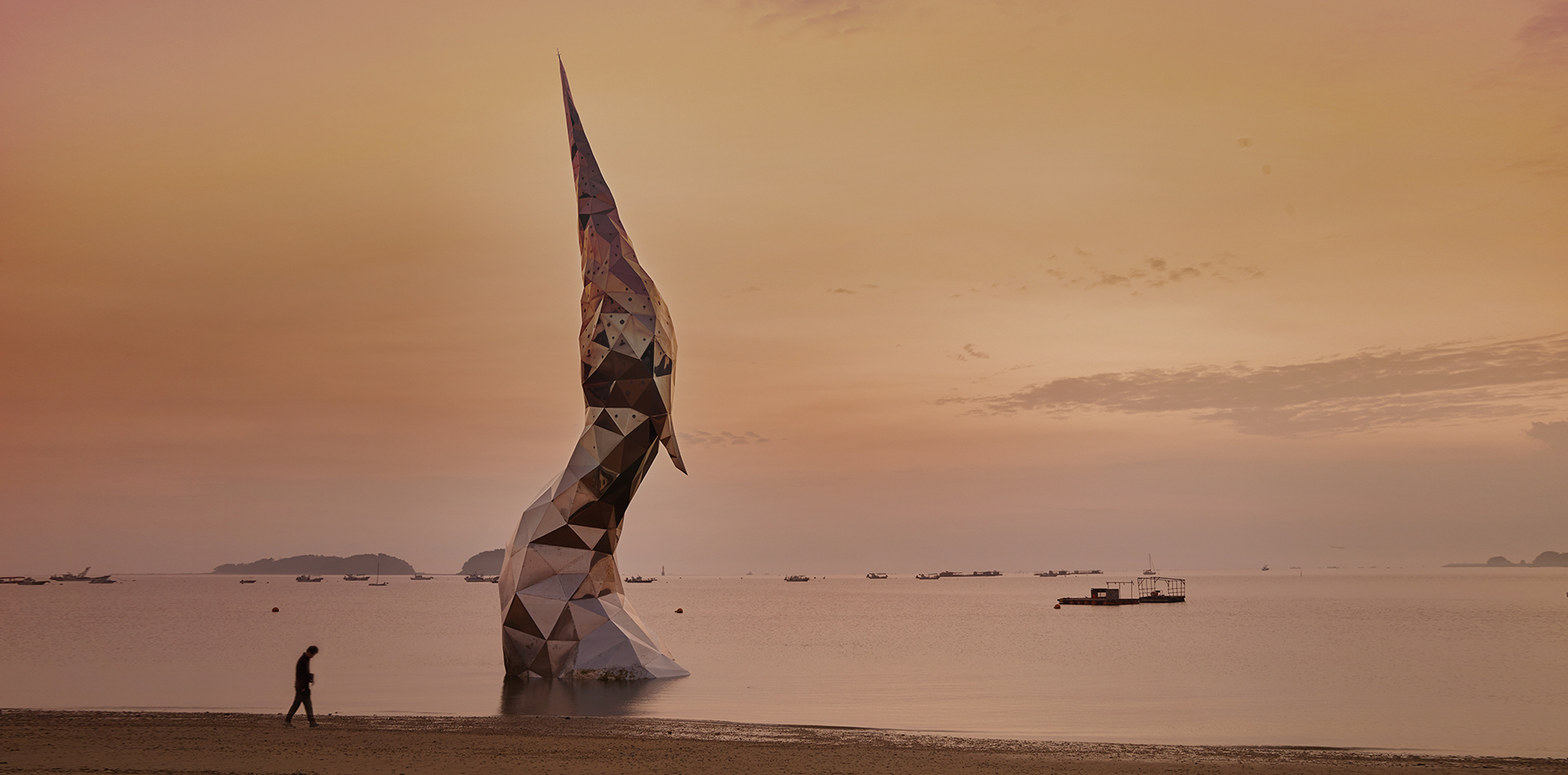Travel
Sea-ing is Believing
Dangjin
Dangjin is a prominent agricultural city in Chungcheongnam-do Province but also a prime fishing spot for both novices and experts. Surrounded by the sea, the city offers wonderful seaside views, popular fishing spots, and tasty and fresh seafood that appeal to more than just those itching to cast their rods into the sea.
Written by• Lee Jisung Photographed by• Studio Kenn
From the fishing post at the beach of Waemok Maeul Village to Janggohang Port that features an annual seafood festival and Jeondaeri Reservoir, which is famous for seasonal carp in fall, the city of Dangjin, Chungcheongnam-do Province, is sure to satiate fishing enthusiasts, or at least their taste buds.
Nanjido Beach
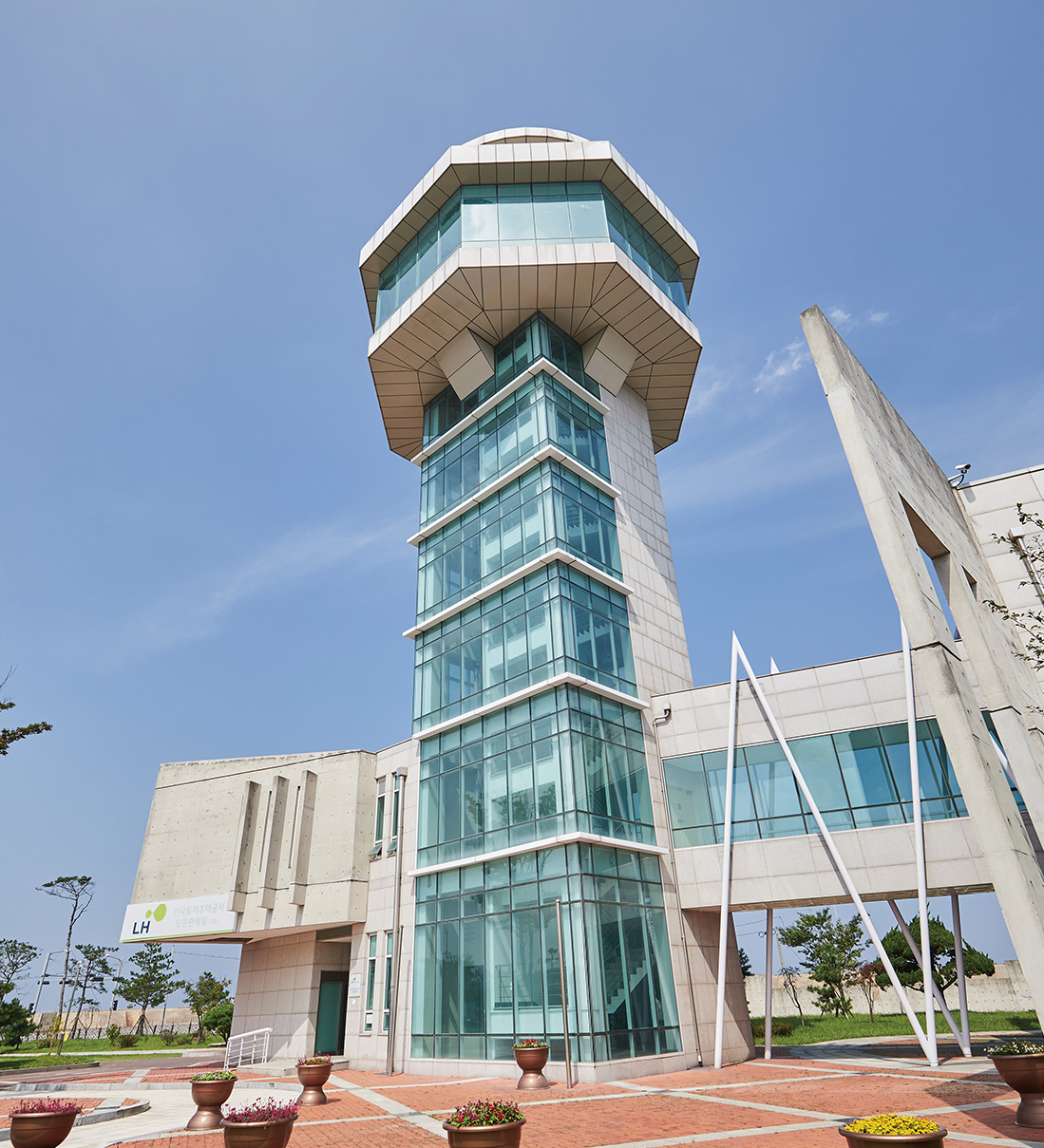
Dangjin Tourism Information Center has an observatory atop the tower.
This mainstay of Dangjin was picked by the Ministry of the Interior and Safety as one of Korea’s top 10 “luxurious islands.” The name “Nanjido” comes from all the nan (orchids) and ji (gromwells) on the island. Nine islands including Dobi-do Island, which is connected to land, comprise Nanjido; the other eight are Sojodo, Daejodo, Woomoodo, Bigyungdo, Boondo, Cheoldo, Sonanjido and Daenanjido. Though Dobido used to be in the ocean, it was integrated as part of land when the Daeho Seawall was built.
Shaped like a half-moon, Nanjido Beach is relatively serene, as getting there takes another boat trip from Dobido. Green pine trees populate the region year round, and the sparkly hues of silvergrass blow with the autumn breeze. The many ways to savor this place include sea sports or water leisure, relaxing on the beach, strolling around the seaside walkway or fishing from the seashore rocks.
The rocks have long been a prime spot for fishing aficionados. Tidal currents flowing smoothly through the rocks make the area an ideal habitat for fish. Seeing these secluded islands and their rocks is a luxury as the exclusivity of the experience is partly due to its high cost. Those who splurge on this are usually veteran fishermen.
“The mainstay of Dangjin
is sure to satiate fishing enthusiasts,
or at least their taste buds.”
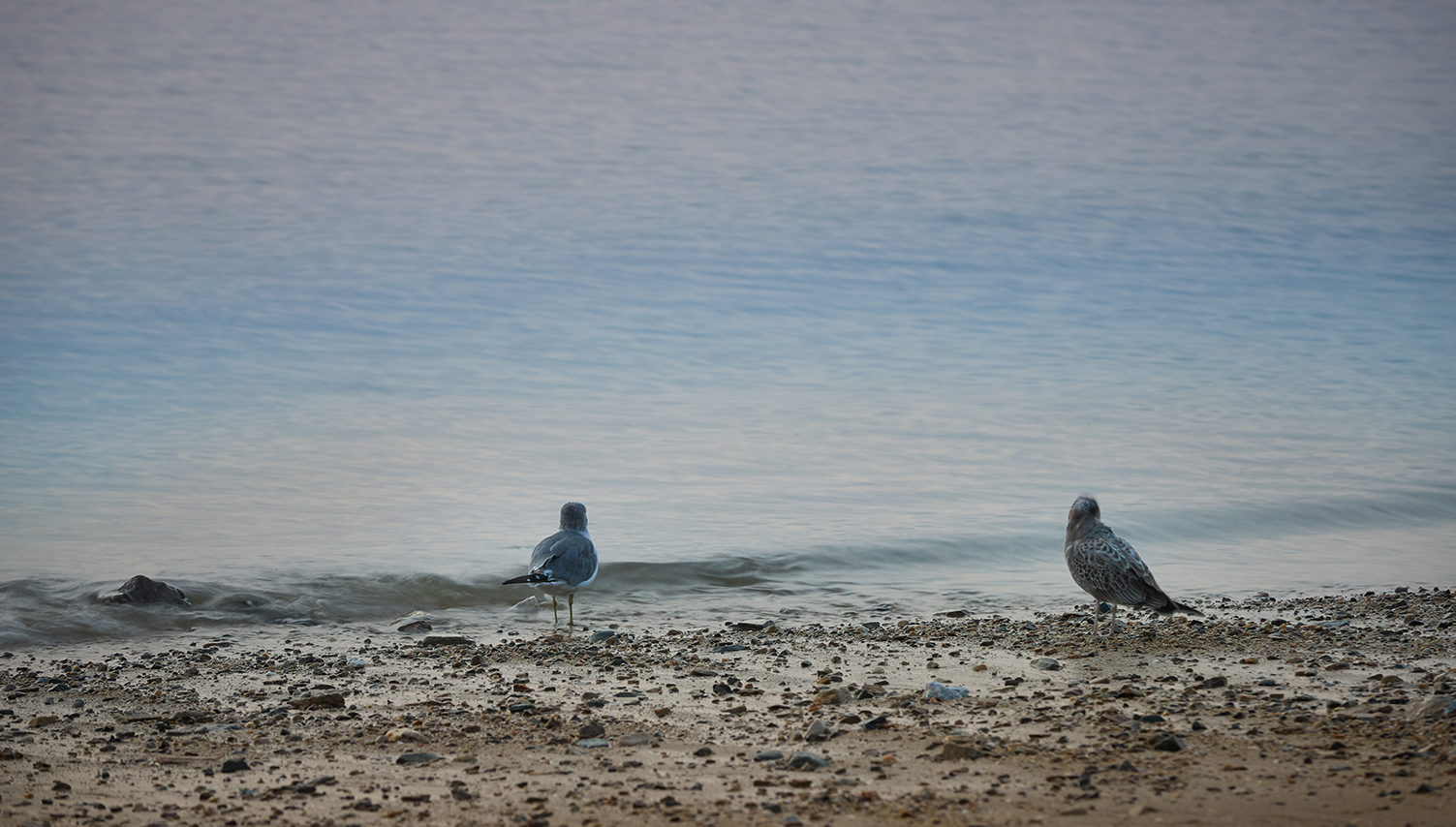
Birds are an integral part of the mudflat ecosystem.
Sunrise & Sunset Village
Drive south for 10 minutes from the Dobido wharf to get to Waemok Maeul Village, whose entrance has a sculpture of a heron named Saebit (new light) Waemok. The figure represents the village at large, as the name “Waemok” comes from waegari (heron) due to its topographic resemblance to a slender-necked heron.
The beach features a mass of fishing rods and is great for novices in fishing. Since the fishing platform is adjacent to the beach, visitors can easily use their rods while enjoying the view. Fishing gear is also available for rental. Groups, especially families, often venture out together to the fishing pedestal located in mid-ocean on boats that offer easy transportation. The pedestal is ideal for those prone to seasickness, as fishing there feels like that on a boat and is a great way to be introduced to fishing.
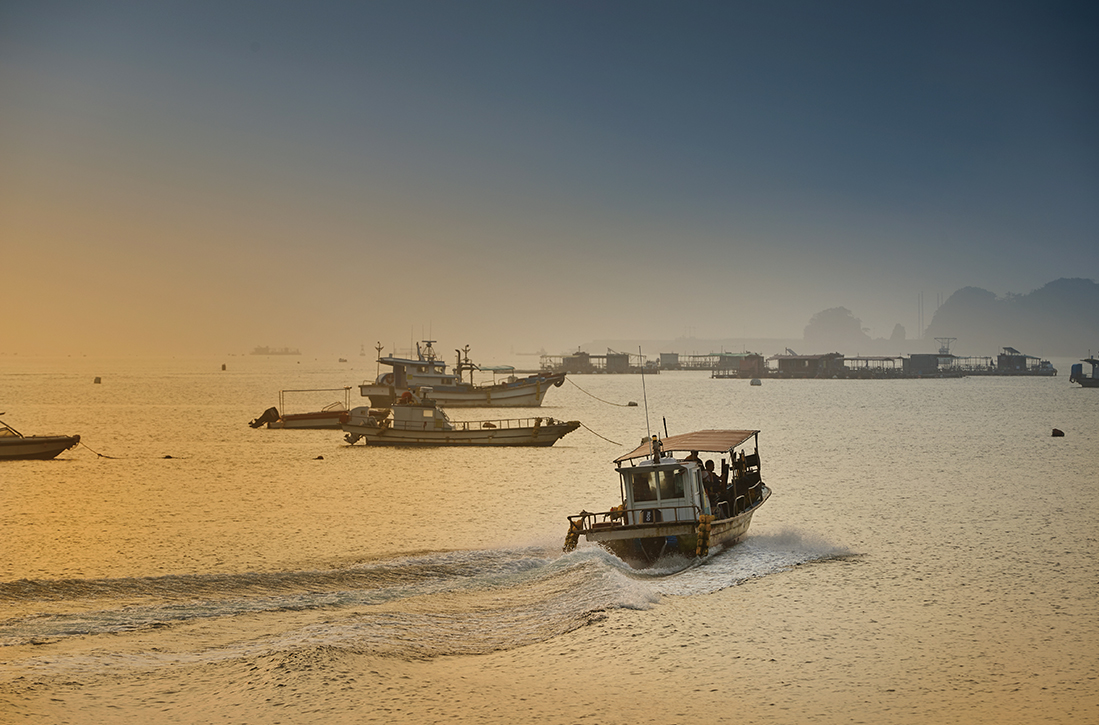
Fishing boats head out in the evening.
The beach is also one of the nation’s few spots ideal for viewing both the sunset and sunrise in the “village of the setting and rising sun.” Whether to fish or just relax by the sea, visitors can experience the oohs and ahhs of seeing the setting or rising sun.
Another signature view is of the sun dangling on what is dubbed “the candlelight stone.” The sunset between early spring and mid-autumn (October) is so beautiful that it is considered one of Dangjin’s top nine sights.
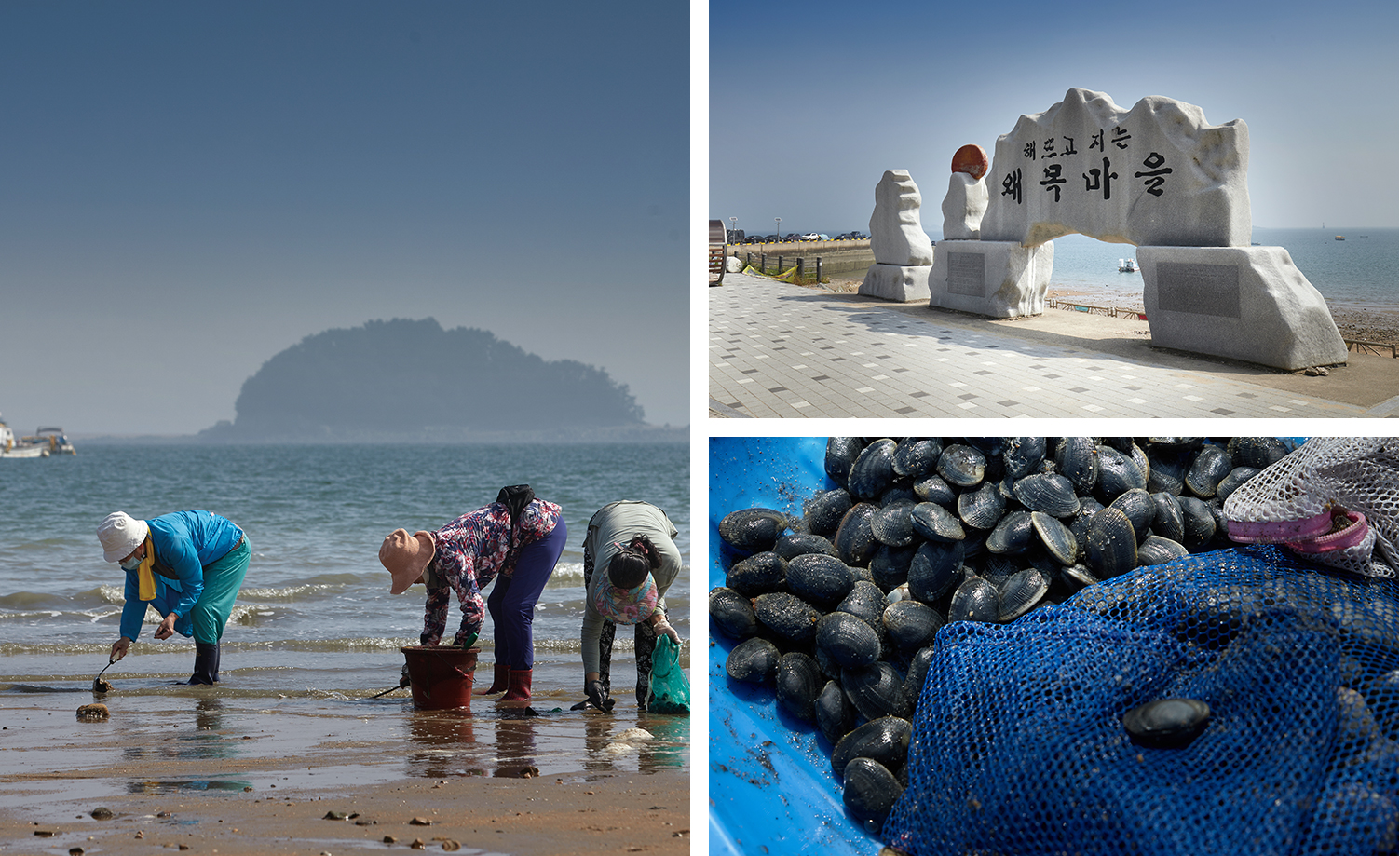
Villagers scour the tidal mud flat. (Left), A sign welcomes visitors to Waemok Maeul Village. (Righti Top), Clams and seashells comprise much of the mudflat ecosystem. (Right Bottom)
Janggohang Port: Seafood Haven
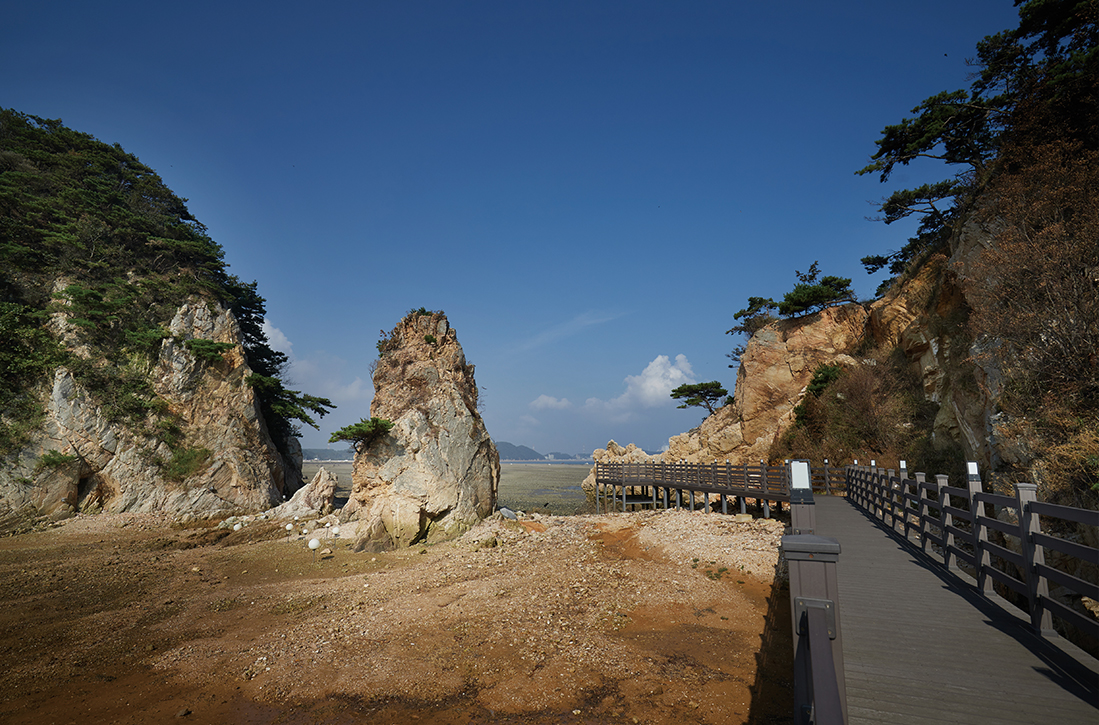
The coastal trail along Nojeokbong Peak attracts strollers and trekkers alike.
A mere five-minute drive east from Wae-mok Maeul Village is Janggohang Port, where the Janggohang Silchi Festival is held every spring. Silchi refers to young tidepool gunnels, or thread-thin white fish. The port is also famous for Nojeokbong Peak, which resembles a candlestick, and Janggohang also takes its name from looking like the traditional drum janggo.
The seawall stretching far toward the ocean is a prime fishing spot. From the aforementioned silchi to rockfish and flounder, an impressive array of fish inhabits these waters. The port and its iconic red lighthouse that marks the end of the seawall are usually packed with fishing rods through late fall.
Fresh fish caught there are gutted and trimmed at the fish market right by the port. The freshness of the catch, not to mention the ocean aroma and breeze, is hard to beat. The market has a wide variety of seafood and marine organisms served onsite like halibut, young skate, blue crab and jumbo shrimp.
After experiencing both fishing and the market, relaxation awaits with a panoramic view of the peak. Yongcheongol, a hill on the peak’s left side, is mentioned in legends of ascending yong (dragons) that were deemed so holy back in the day that villagers never dared venture near it.
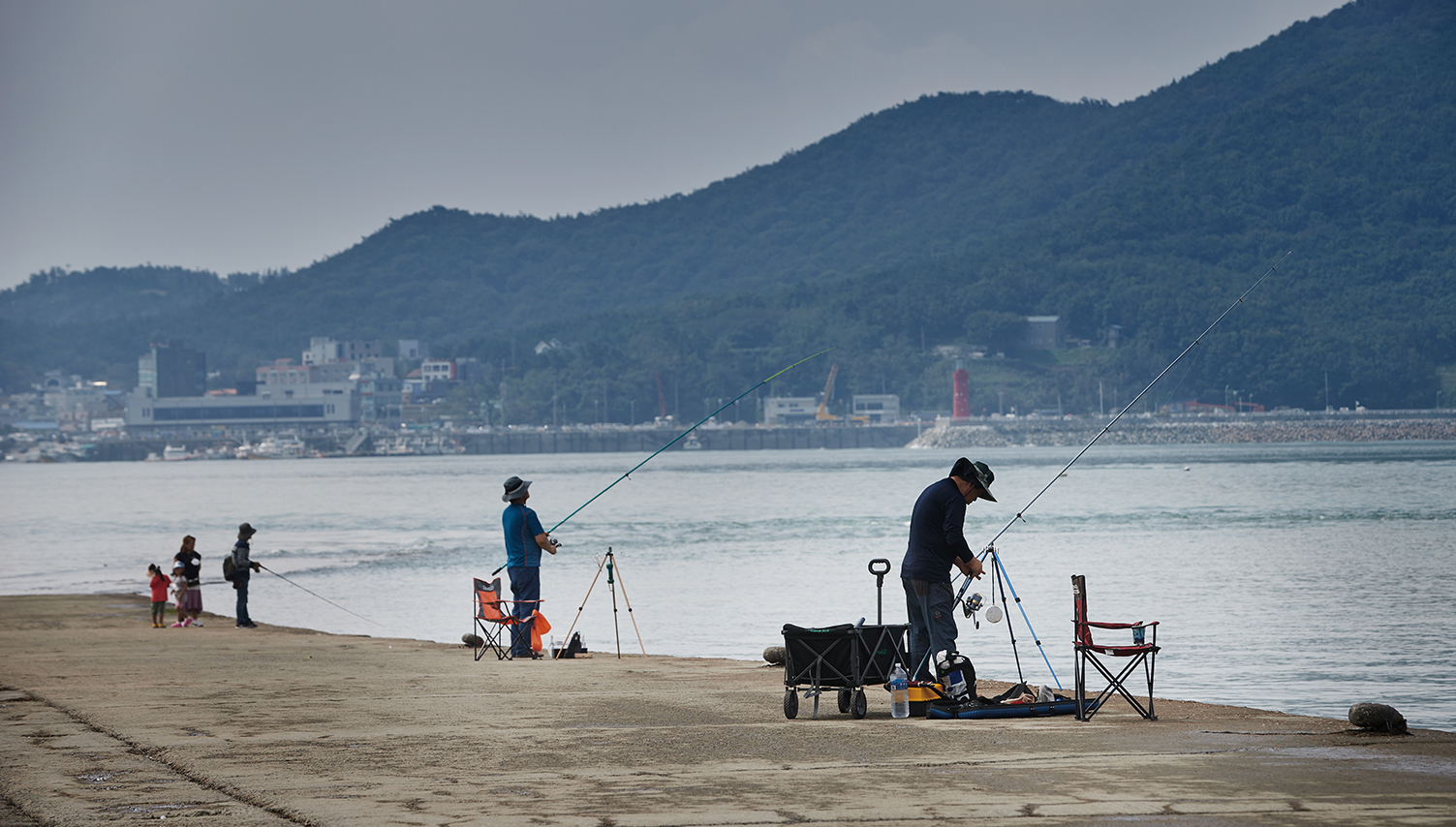
People leisurely fish with their portable gear on Dobido Island.
Carp-rich Jeondaeri Reservoir
Jeondaeri Reservoir appears after a 30-minute drive from the port. Filled with colorful wildflowers like chrysanthemum, sunflower, cosmos, morning glory and touch-me-not, the reservoir attracts fishing enthusiasts battling for spots to catch the best autumn carp.
The reservoir’s management office provides basic facilities like restrooms and restaurants that are often lacking at many fishing areas nationwide.
Depending on preference, visitors can decide whether to go during high or low tide. High tide has small carp flocking there and low tide attracts larger-size (and tasty) carp.

